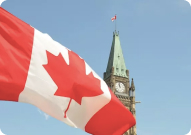CAIRP: Q3 2020 Canadian Insolvency Statistics
TORONTO, ON – November 4, 2020 – New stats released today by the Office of the Superintendent of Bankruptcy show that the number of insolvencies in Canada increased in the third quarter. After record declines in the second quarter, total insolvencies were up 7.9 per cent.
“Heading into a second wave of COVID-related restrictions that will continue to have a negative impact on the economy, a continued uptick in insolvencies looks inevitable,” says Mark Rosen, Chair of the Canadian Association of Insolvency and Restructuring Professionals (CAIRP).
According to CAIRP, which is the national voice on insolvency matters in Canada, the stats point to the financial upheaval that the pandemic is wielding across the country. On a month-over-month basis, the total number of insolvencies in Canada increased by 18.8 per cent in September compared to August.
“As it stands, insolvencies are down compared to last year but we can attribute the decline to pandemic-related government support, unprecedented creditor flexibility and a lockdown lag whereby insolvency proceedings have been delayed – whether by personal choice or due to court closures,” say Rosen, a 35-year veteran of the industry.
Total insolvencies were down 40 per cent in the third quarter compared to the same quarter last year and 19.2 per cent for the 12-month period ending Sept. 30, 2020.
COVID Cliff: Consumer Insolvencies Set to Climb as Indebted Canadians Teeter on the Edge
After a record decline in the second quarter (-42.3%), consumer insolvencies increased 8.1 per cent in the third quarter. Consumer insolvency filings are still in decline compared to last year; however, down 40.3 per cent in the third quarter of 2020 compared to the same quarter the previous year. There were also 19.2 per cent fewer consumer insolvencies for the 12-month period ending September 30, 2020, compared to the same period last year.
“There are many individuals who are currently scraping by. These individuals are most at risk because it is often sudden income shocks – like a job loss, or a major car or home repair – that can trigger insolvency. Right now, many are teetering on the edge of that COVID cliff,” says André Bolduc, executive board member of CAIRP and Licensed Insolvency Trustee.
Across Canada, Newfoundland and Labrador residents saw the largest rise in consumer insolvencies, up 27.7 per cent compared to the second quarter. New Brunswick, Quebec, and Nova Scotia experienced increases of 26.2 per cent, 21.6 per cent, and 10.3 per cent respectively. Prince Edward Island (5.6%), Ontario (4.6%) and Alberta (1.9%) registered small increases in consumer insolvencies compared to the previous quarter. Meanwhile, British Columbia (-5.4%), Manitoba (-4.8%) and Saskatchewan (-2.1%) were exceptions to the upward trend, with decreases in all three provinces.
“In many cases, the coronavirus crisis will expose deeper financial issues, like staggering household debt. As pandemic assistance measures end and creditors begin collecting current payments and deferred payments, those who are dangerously over-leveraged are going feel the squeeze most,” he says.
While there is often stigma associated with debt relief, Bolduc says that declaring bankruptcy isn’t the only solution. Other options include striking a deal with creditors through an informal debt settlement, consolidating all debts into one monthly repayment, or making a debt repayment plan through a consumer proposal.
“There is a lot of misinformation out there and the pandemic has added additional layers of complexity. Anyone struggling should make sure they get advice from a licensed professional,” says Bolduc. “The sooner an individual gets help, the more options they will have to deal with their debt.”
Licensed Insolvency Trustees are the only federally regulated debt professionals. They take a customized approach to help indebted Canadians, providing impartial guidance on the wide range of debt-relief options available.
Business Insolvencies Edge Upwards in the Third Quarter
Business insolvencies increased modestly in the third quarter, rising 3.5 per cent compared to the previous quarter. This increase comes after declines of 2.6 per cent and 31.3 per cent in the first and second quarters of this year.
Compared to last year, however, insolvencies remain on the decline. There were 24.1 per cent fewer business insolvencies in the third quarter of 2020 compared to the same quarter last year, and 18.7 per cent fewer for the 12-month period ending September 30, 2020.
David Lewis, a member of the Canadian Association of Insolvency and Restructuring Professionals (CAIRP) who focuses on corporate insolvency, points out that the stats don’t take into account the full scope of the devastating impact the pandemic is having on Canadian businesses.
“What we don’t see reflected in the insolvency statistics is the alarming number of business owners who are choosing to ‘walk away’ rather than filing a bankruptcy,” says Lewis. “By not taking any formal steps to wind down the business or settle their business debts, they may be making matters worse for themselves.”
Some business owners end up spending time and legal costs defending lawsuits filed against the business and directors by creditors who are owed money. They may end up personally liable for some or all of the corporate debts, depending on the debt that is left behind in the business.
“Businesses who received relief from landlords may now be feeling additional financial strain as landlords look to receive normal payments and pick up on arrears. Additionally, the loans offered as part of the first wave of COVID-relief are long gone for many now facing a second wave of restrictions. Expanded and extended loan programs are giving many businesses some breathing room but at the end of the day, they are still taking on more debt that must be paid back eventually.”
“For Canadian businesses navigating serious financial distress, it is in everybody’s interest – theirs and their lenders’ – that they speak with a Licensed Insolvency Trustee who can help them understand their options for insolvency or restructuring,” he adds.
